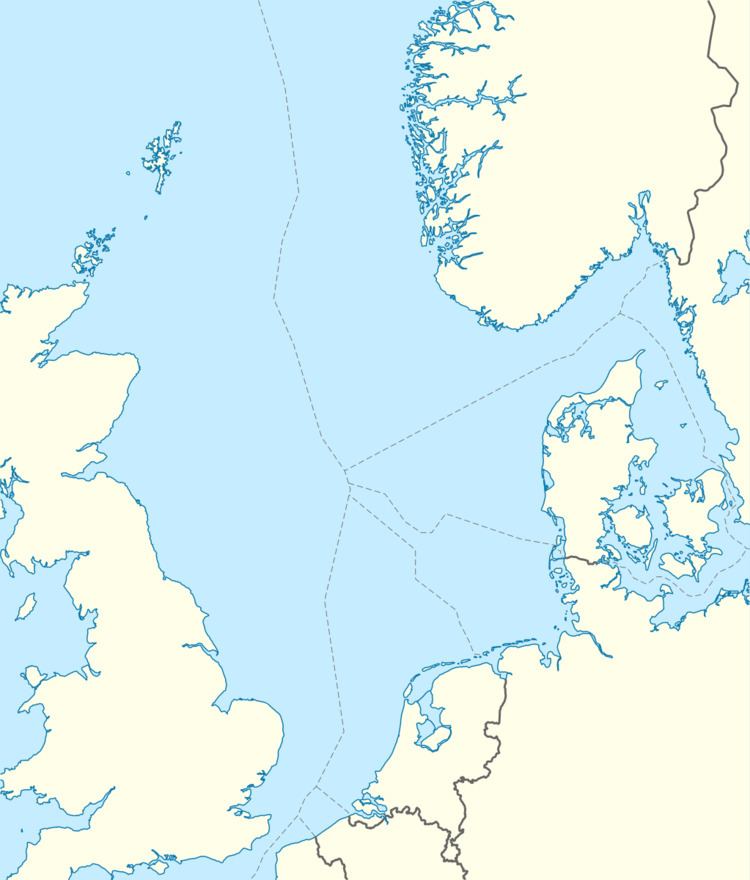Location East Shetland Basin | Offshore/onshore Offshore Discovery 1973 | |
 | ||
Country Scotland, United Kingdom | ||
The Hutton oil field, located on the UK continental shelf, was the location for the first ever production Tension Leg Platform (TLP).
Contents
History
The Hutton oil field is situated in the East Shetland Basin in the UK North Sea on the western side of the Viking Graben. It straddles UK Blocks 211/27 and 211/28. The field was discovered in July 1973 by the Conoco well 211/28-la and was operated by Conoco (UK) Limited.
Geology
The structure comprises a series of southwesterly dipping tilted fault blocks. The reservoir sandstones are Middle Jurassic in age and were deposited as a result of deltaic progradation across the Hutton area. The oil bearing Brent Group sandstones vary in thickness from 150 ft to 380 ft with average porosities of 22% and permeabilities of 500-2000 md in the producing zones. Original recoverable reserves were estimated at 190 million barrels, of which the field has produced 107 million barrels by 1991.
Production
Production of the field began in August 1984 and increased rapidly to a peak in 1986 with a total annual production value of 34 MMbbl. This then declined alarmingly and was stabilized somewhat with the introduction of water injection. By 1995 production rates were falling once again with just over 1 MMbbl produced over the first five months of 2001. The field was retired in summer 2001 having produced approximately 265 MMbbl over its lifetime, exceeding the initial estimates of 190 MMbbl of recoverable oil.
Facility
Vickers Offshore (Projects & Developments), had been working on the TLP Concept since 1974. The Hutton topsides design was awarded in 1981 to Brown & Root. The integrated topsides was built at the McDermott Ardersier yard in Scotland, and the hull at the HiFab Nigg yard. Hutton TLP was installed in 1984 by Aker Offshore. It was the first Tension Leg Platform permanently moored to the sea floor via tethers or tendons at each of the structures corners.
The Hutton TLP was originally designed for a service life of 25 years in the North Sea depth of 100 to 1000 metres. It had 16 tension legs. Its weigh varied between 46,500 and 55,000 tons when moored to the seabed, but up to 61,580 tons when floating freely. The total area of its living quarters was about 3,500 square metres and accommodated over a 100 cabins though only 40 people were necessary to maintain the structure in place.
At the time of decommissioning the field was operated by Kerr-McGee. The TLP platform was removed for re-use outside the UK when the platform was purchased by Sevmorneftegaz, a subsidiary of Gazprom, in August 2002, and after having its decommissioning programme accepted by the UK Government.
The floating platform was towed to Murmansk in Russia where the topsides facilities and main hull were de-mated. Subsequently the topsides were transported by barge to the Sevmash fabrication yard at Severodvinsk, where they were temporarily stored while undergoing refurbishment and refitting.
After completion the topsides were reinstalled onto a new hull structure of the Prirazlomnaya platform, and will be towed into position ready for a new role in the development of the Prirazlomnoye Field, 1,200 kilometres (750 mi) north east of Arkhangelsk in the Pechora Sea. In early 2009 the hull of the former Hutton TLP was being towed from Murmansk to the Gulf of Mexico for reinstalling on a new structure, however the project was cancelled, and hull is currently cold-stacked in the Cromarty Firth, Scotland.
